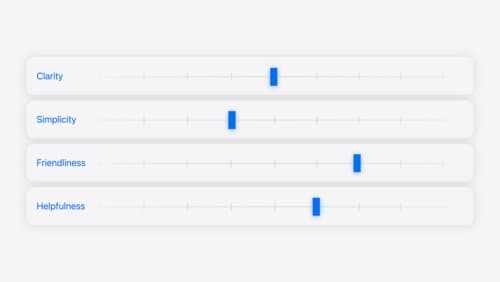Start with an app
Asked on 2024-07-31
1 search
To start with an app, you can focus on several key aspects presented at WWDC:
-
Define Your App's Personality and Voice:
- In the session Add personality to your app through UX writing, you can learn how to define your app's voice by imagining your app as a person and identifying its unique personality traits. This helps in creating a consistent and engaging user experience.
-
Core Features with App Intents:
- The session Bring your app’s core features to users with App Intents discusses how to make your app's core features more accessible across the device using App Intents. This includes creating shortcuts, widgets, and integrating with Siri and Spotlight to reduce friction and improve user flow.
-
Splash Screen and Visual Style:
- In the session Build a spatial drawing app with RealityKit, you can learn how to create an engaging splash screen that showcases your app's visual style and welcomes users into the app's space.
-
Document Launch Experience:
- The session Evolve your document launch experience covers how to add template support to your app, which can be a great starting point for users creating new documents. This can help in maintaining a consistent format and style.
-
SwiftUI Enhancements:
- The session What’s new in SwiftUI highlights new features in SwiftUI, including document-based apps, custom document icons, and templates. This can help you create a more personalized and feature-rich app.
Relevant Sessions:
- Add personality to your app through UX writing
- Bring your app’s core features to users with App Intents
- Build a spatial drawing app with RealityKit
- Evolve your document launch experience
- What’s new in SwiftUI
By focusing on these aspects, you can create a well-rounded and engaging app that stands out to users.

Build a spatial drawing app with RealityKit
Harness the power of RealityKit through the process of building a spatial drawing app. As you create an eye-catching spatial experience that integrates RealityKit with ARKit and SwiftUI, you’ll explore how resources work in RealityKit and how to use features like low-level mesh and texture APIs to achieve fast updates of the users’ brush strokes.

Design App Intents for system experiences
App Intents power system experiences in controls, Spotlight, Siri, and more. Find out how to identify the functionality that’s best for App Intents, and how to use parameters to make these intents flexible. Learn how to use App Intents to allow people to take action outside your app, and see examples of when to navigate into your app to show contextual information.

Add personality to your app through UX writing
Every app has a personality that comes across in what you say — and how you say it. Learn how to define your app’s voice and modulate your tone for every situation, from celebratory notifications to error messages. We’ll help you get specific about your app’s purpose and audience and practice writing in different tones.
